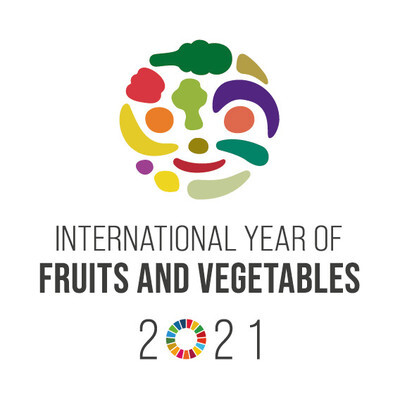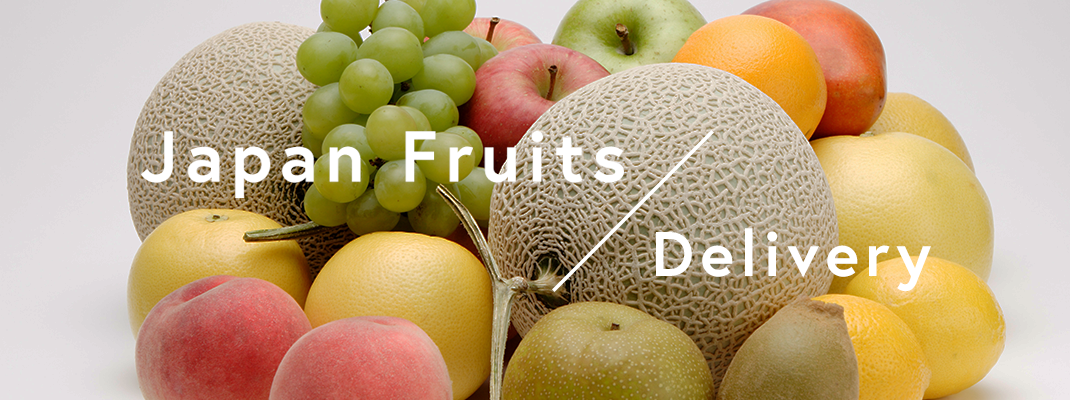August Recipe: Having Fun With Peaches
Easy Recipes to Try at Home
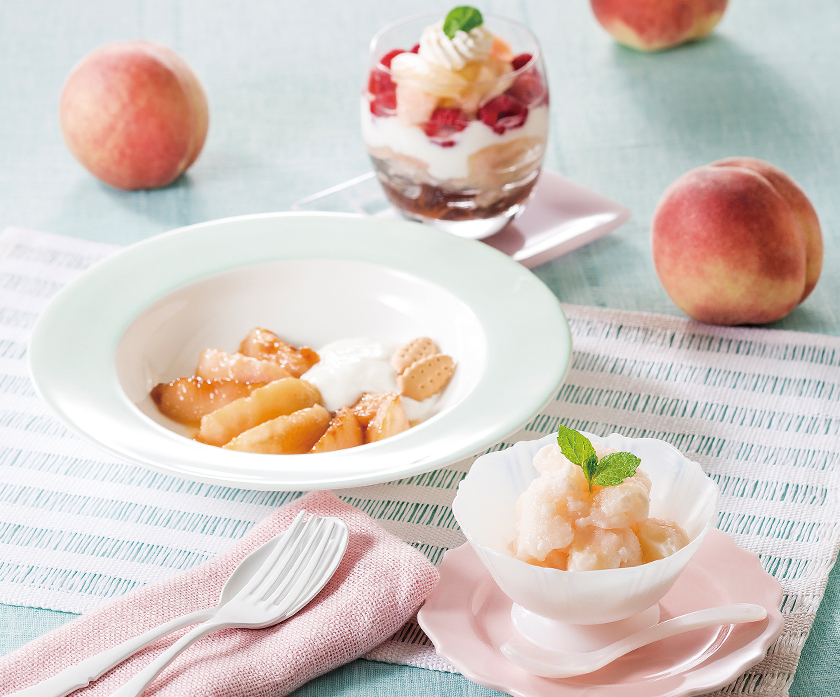
Why not try something a bit different using peaches?
Peaches are just the thing for menus on hot summer days.
A Light Touch
Fruit Recipe.1
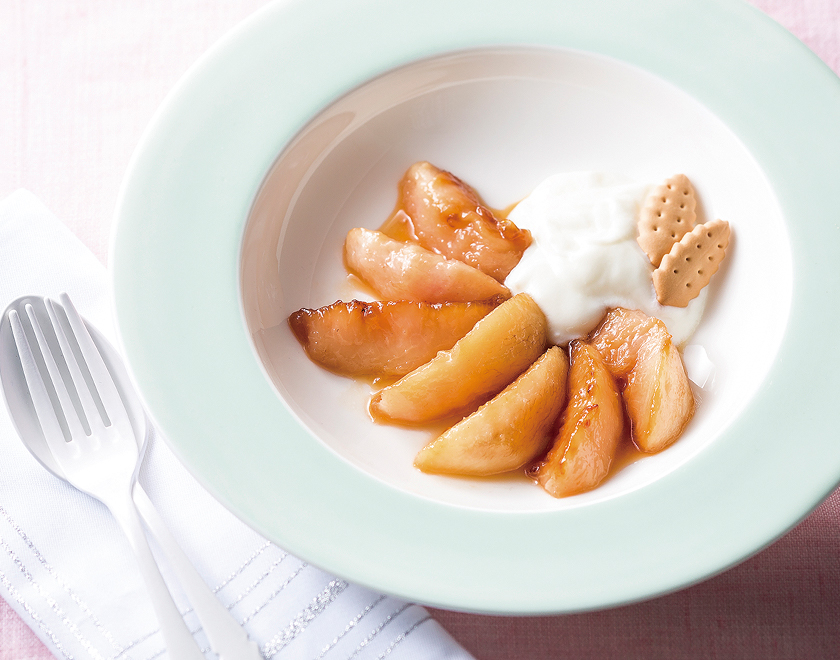
Sauteed Summer Peach Dessert
Just by giving peaches a light sauteing, you can enjoy them in a whole different way.
Ingredients: Serves 2
A Light Touch
Fruit Recipe.2
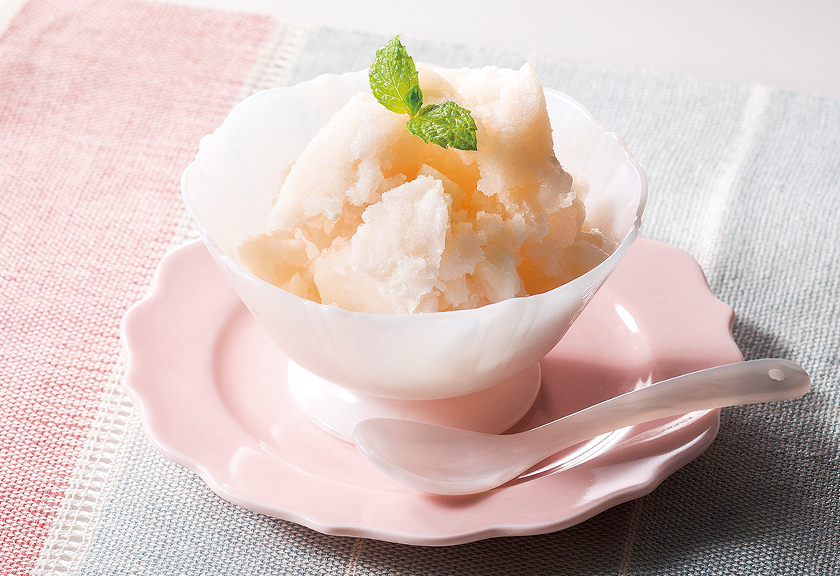
Peach and Amazake Sherbet
A sherbet pairing peaches and the liquid cure that is amazake (sweet sake), the ideal thing for hot summers.
Ingredients: Serves 2
A Light Touch
Fruit Recipe.3
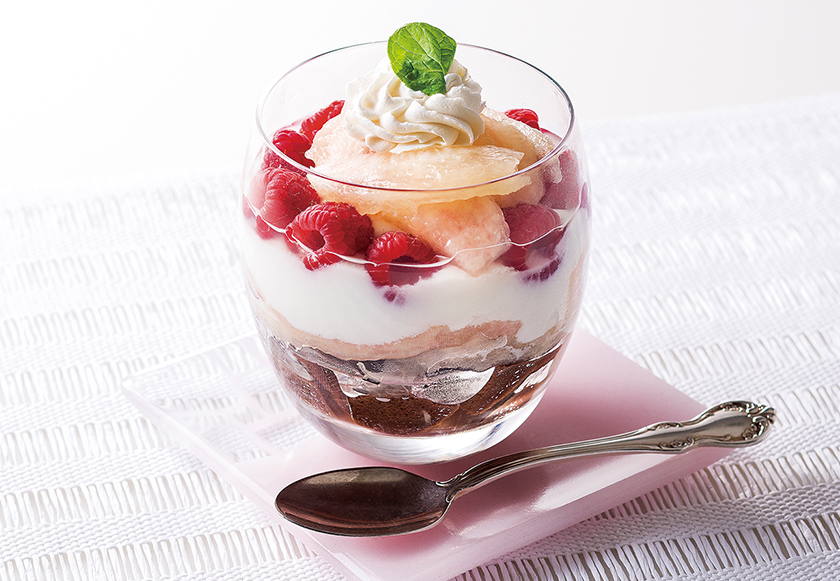
Tiramisu Style Peaches
A simple yet flashy dessert. Peaches and raspberries go very well together, and look great too.
Ingredients: Serves 4
・*Shinjuku Takano’s original “Chocolate Brandy Cake”
Shinjuku Takano Fruit Coordinator
Fukushima Grown Peaches
With the ideal climate and rich soil for growing fruits, Fukushima prefecture is a treasure trove of seasonal fruits, including peaches.
These beautiful peaches are grown with confidence thanks to the thorough management of the farmers, which includes cultivation logbooks and carefully monitored inspections.
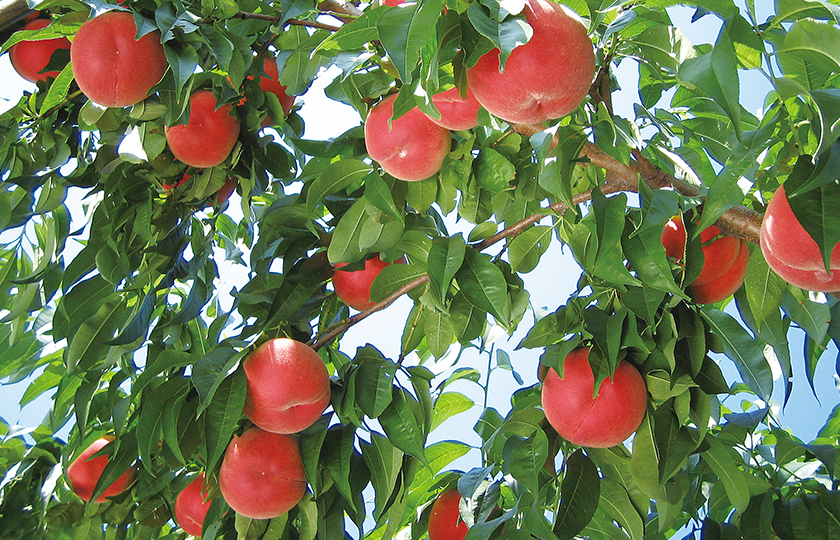
Located in the Tohoku region, Fukushima prefecture is the third largest prefecture in Japan, coming after Hokkaido and Iwate, and is divided into three major areas: Hamadori, Nakadori and Aizu. In Fukushima city, located in the heart of the area we visited, peaches are actively cultivated and grown. Fukushima is the second largest peach producing prefecture in Japan. Beginning with Akatsuki, the representative peaches of Fukushima, and moving on to Madoka, one that is sure to become major in the future,let’s take a closer look at the varieties of peaches available in Fukushima.
Although peaches are the most popular cultivar in Fukushima city,various other fruits including grapes, apples, pears, and cherries are also widely grown here. Fukushima has a low annual rainfall, with high temperatures and humidity in the summer, and is quite cold in the winter, as well as having a unique climate in the basin too; this makes it a very rich land where various fruits can easily be cultivated all year long.
Speaking of peach varieties that represent the prefecture, while the Akatsuki peaches are the most famous, the Madoka cultivars are quickly gaining attention as the next generation of peaches from Fukushima.No matter if they are fresh from the tree or a few days afterward, the flesh of these peaches is solid, and characterized by just the right level of sweetness and plentiful juice. These peaches are perfect for parfaits and other desserts as, even when fully ripe, their flesh doesn’t fall apart easily. And, the Sakura peach, which is available from mid-September, is the late season cultivar personally authorized by JA Fukushima Mirai Honbu’s own vice director Mr. Saito, and and Sales/Horticulture chief Mr. Sato, who we visited with today to film. Despite the firmness of the flesh of this peach, it practically melts in your mouth, which makes it a particularly enjoyable fruit to savor. However, as it is a late season cultivar, it can be quite labor intensive to produce, as its growth and harvest season overlaps with the fall rainy season, when typhoons occur somewhat frequently.
Peach cultivation in Fukushima Prefecture is focused on bagless cultivation wherein bags are not placed around the fruit while still on the tree. Both Akatsuki and Madoka peaches are bathed in plenty of sunlight until they are harvested and shipped (other peaches, depending on variety, may be bagged). One point of peaches these peaches is that their time spent on the tree is comparatively long; this not only allows them to gain more nutritional value, but also improves their sweetness. In order to properly ship peaches, fastidious management structures have been set out by the prefecture itself. All producers are required to submit cultivation control journals that explain their work, detailing points such as what kind of pesticide (if any) has been used by a given farm, as well as when, how much, and in what concentration it was used. Although they are now at safe levels, in order to assure consumers of the safety of their produce, JA has continued to monitor the radiation levels of all products from Fukushima prefecture. Even though the levels remained safe, this is done to demonstrate the reliability of their produce. Through thorough, dedicated care, delicious, high quality Fukushima peaches can be delivered from the farm to your dining table.
From their representative Akatsuki brand peaches onward, consumers just can’t help enjoying the multitude of peaches available from Fukushima prefecture.
White Peaches from Okayama Prefecture
We called on the cities of Akaiwa and Souja in Okayama prefecture.
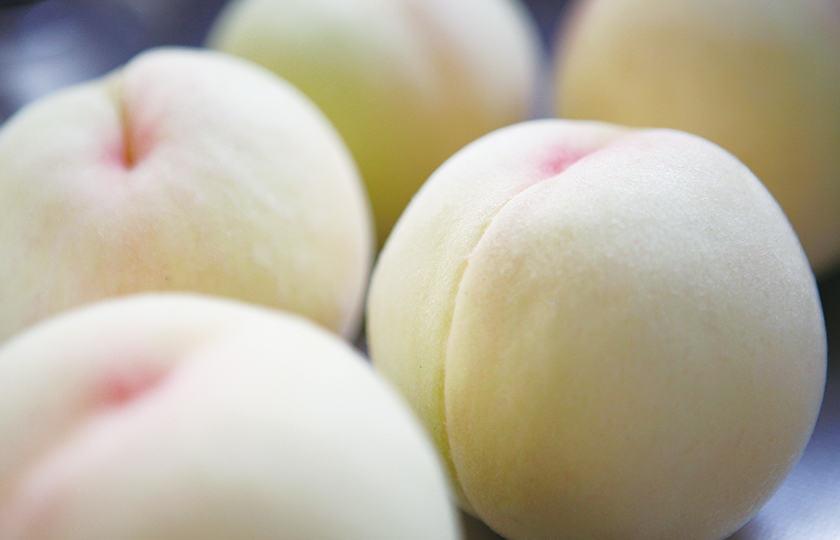
Akaiwa City
Aiming to Exceed the Heights Achieved by My Master Peach Cultivating Father
Akaiwa is the town where the “father of fruit growing",Koyama Masuta was born. It’s said that the man behind white peaches, Okubo Jugoro, was one of Koyama Masuta’s pupils. In Akaiwa, where the white peach representative of Okayama prefecture was born,we spoke to an up and coming peach farmer.
Akaiwa is an ideal place for peach cultivation thanks to its loose hilly landscape and wide plains. This is the hope of Ippei Komoto, a young peach producer here. “My father was originally a peach producer, but after he suffered ill health about four years ago, I began working in earnest. I used to help him out when I was a high school student, but when I started out, I soon realized that there was a lot that I didn’t know. At the beginning, while mid-battle with his illness, my father would still help out by phone or through emails, other peach producers in the area also lent me a hand, and I took part in various study groups, workshops, etc, and somehow made it feverishly through right up to shipping. Now we’re cultivating eight different types of peaches, including Kanouiwa white peaches, Shimizu white peaches, and Okayama Yume white peaches. The only reason that I have made it this far is because of the advice of my father and those around me. Someday I’d like to become an even more wonderful peach producer than my father."
Souja City
Just Before Shipping, One Last Flavor Check! The Producers'"Meaiwasekai"
Souja, and particularly the Souja City Peach Production Association, is known for the high quality peaches that they produce. Through mutual encouragement, everyone from young producers to old pros tackle everything from cultivation to sorting in unison. No matter what these producers always hold a meaiwasekai before their first shipment is sent out, and we were able to cover it.
A meaiwasekai is something that the consumer is rarely able to see, which is why were were fortunate to be able to cover it. A meaiwasekai is an important event wherein members of the Souja Peach Production Association gather together where their first peaches of the season are sorted for shipping, and check the color, firmness, flavor and other qualities of the peaches, to ensure that they are all up to the association’s high standards before being shipped. This time, the products to be shipped out the next day were the first shipment of Kanouiwa white peaches. First the firmness of the peaches is tested with special measures, then the color of the peels are compared and checked thoroughly. They are compared to see whether or not they have the best coloring, or whether there are any green areas still, all of which is easily checked and confirmed.
Next, some of the peaches are taken out and cut open by the producers to check their flavor. The flavor, firmness, color and other vital points, as well as harvest timing, are comprehensively checked and discussed between all producers present. Now, on the first day when shipping is about to start in particular, everything is subject to a quite strict re-examination. At that time, whether or not there is still some green/unripened areas present, whether they were harvested too early, and other points is once again checked, and phone calls are made to the farms in order to instruct the producers on how to ensure that their subsequent shipments will be at their very best. There are numerous different cultivars, and differences in soils and trees from orchard to orchard that must be considered in order to determine the condition of each peach. It is for this reason that these meaiwasekai are so vital; each producer can ascertain their best harvest season, and each member of the association can work together to provide peaches at their very finest for shipment.
-
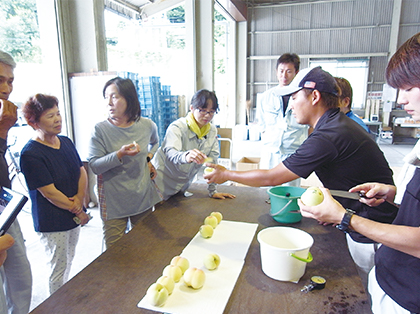
The younger members of the producer’s association play a central role in bringing about these amazing peaches. -
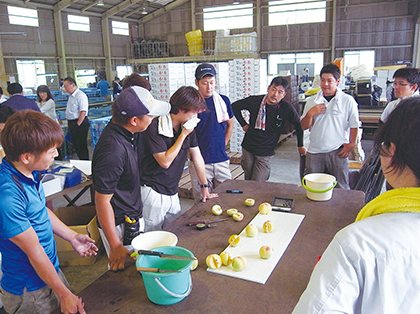
They cut the peaches, and along with their producers, check the flavors out carefully, and during harvesting season, have comprehensive discussions together as well.
Article sponsored by Shinjuku Takano

